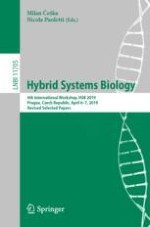This book constitutes the thoroughly refereed proceedings of the 6th International Workshop on Hybrid Systems Biology, HSB 2019, held in Prague, Czech Republic, in April 2019.
The 8 full papers presented in this book together with 1 short paper and 3 invited papers were carefully reviewed and selected from 13 submissions. They cover topics such as: modeling and analysis of metabolic, signaling, and genetic regulatory networks in living cells; models of tissues, organs, physiological models; models and methods coping with incomplete, uncertain and heterogeneous information including learning for biological systems, parametric synthesis and inference; stochastic and hybrid models in biology; hierarchical systems for multi-scale, multi-domain analysis; abstraction, approximation, discretization, and model reduction techniques; modeling, analysis and design for synthetic biology, cyber-biological systems and biomedical studies (e.g. therapies, teleoperation); game-theoretical frameworks and population models in biology (e.g. mixed-effects and Bayesian modeling); biological applications of quantitative and formal analysis techniques (e.g. reachability computation, model checking, abstract interpretation, bifurcation theory, stability and sensitivity analysis); efficient techniques for combined and heterogeneous (stochastic/deterministic, spatial/non-spatial) simulations for biological models; modeling languages and logics for biological systems with related analysis and simulation tools; and control architectures of biological systems including biology-in-the-loop systems and bio-robotics.
